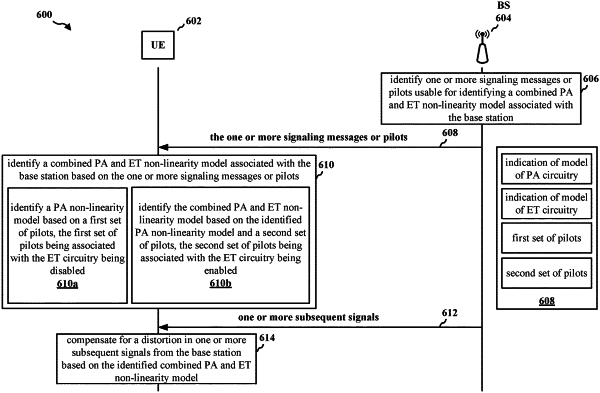| CPC H04L 5/0048 (2013.01) [H04L 5/0067 (2013.01); H04L 5/0073 (2013.01); H04L 27/367 (2013.01)] | 27 Claims |

|
1. An apparatus for wireless communication at a user equipment (UE), comprising:
memory; and
at least one processor coupled to the memory and configured to:
receive, from a base station, one or more signaling messages or pilots;
identify a combined power amplifier (PA) and envelope tracking (ET) non-linearity model associated with the base station based on the one or more signaling messages or pilots; and
compensate for a distortion in one or more subsequent signals from the base station based on the identified combined PA and ET non-linearity model, the distortion being associated with a PA circuitry and an ET circuitry, the PA circuitry and the ET circuitry being associated with the base station, and wherein at least one of:
the one or more signaling messages or pilots include an indication of an ET non-linearity model, and wherein the ET non-linearity model corresponds to a filter response model associated with the ET circuitry associated with the base station;
the one or more signaling messages or pilots are associated with a plurality of power levels, and the at least one processor is further configured to estimate a threshold envelope value associated with the ET circuitry being enabled or disabled based on the one or more signaling messages or pilots;
at least some of the one or more signaling messages or pilots are associated with one or more bandwidths that are less than a threshold; or
to compensate for the distortion, the at least one processor is further configured to perform a digital post-distortion (DPoD) process associated with the one or more subsequent signals from the base station based on the identified combined PA and ET non-linearity model.
|